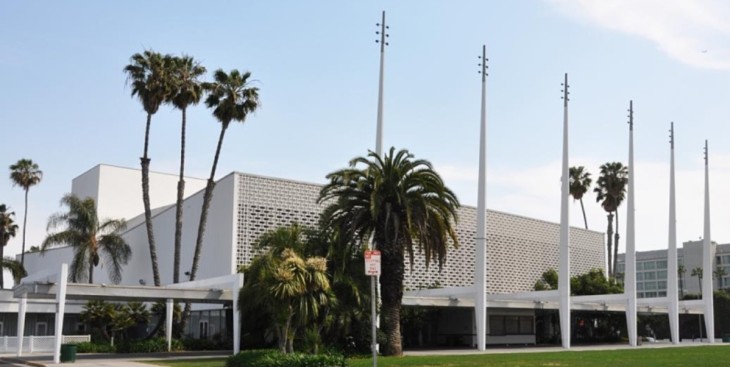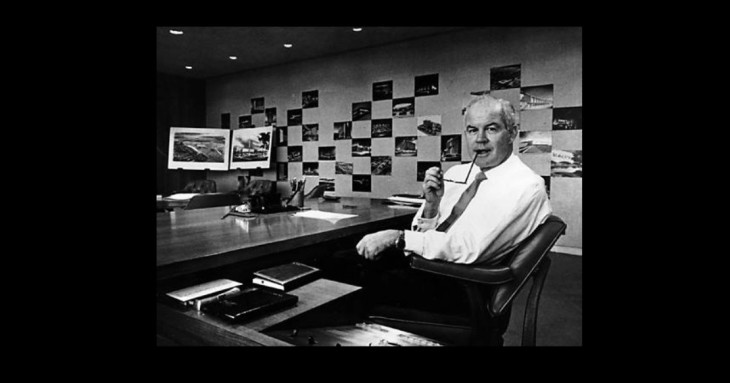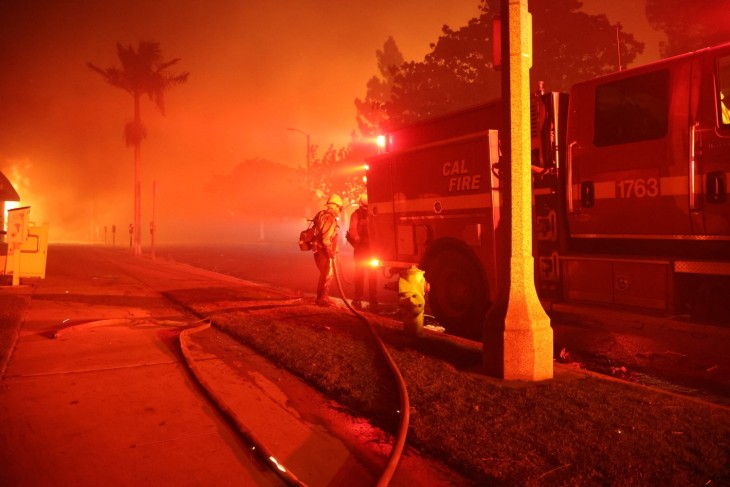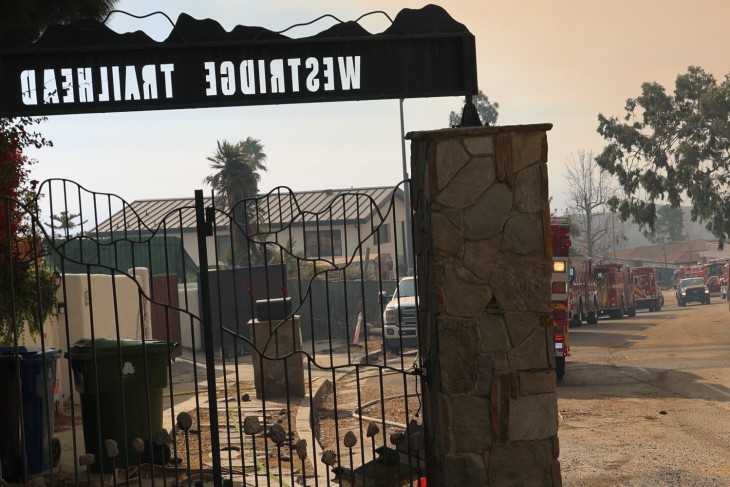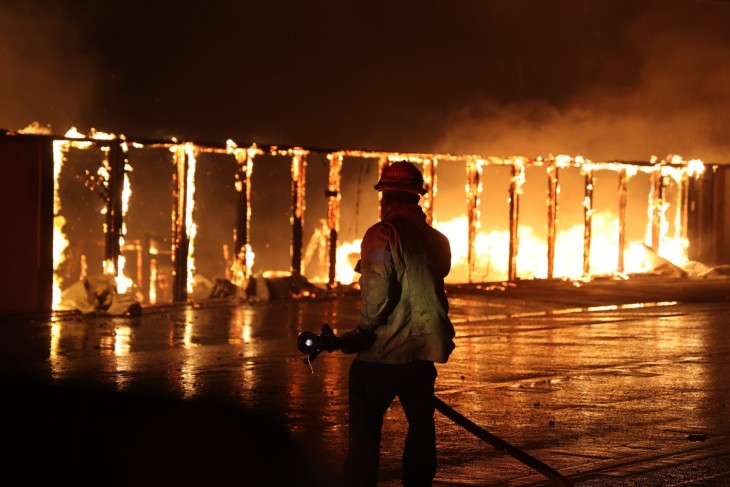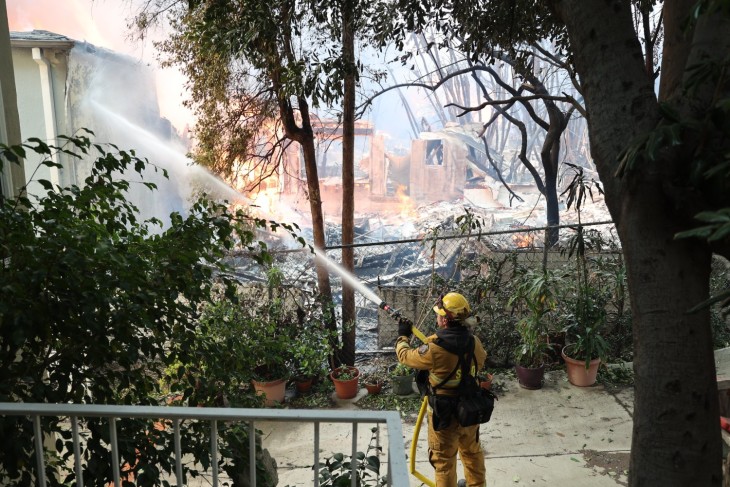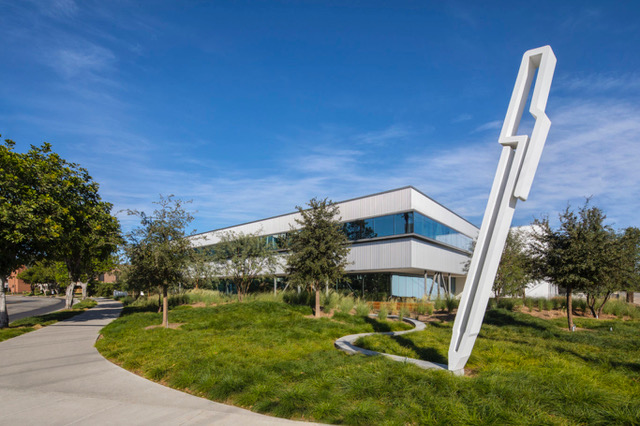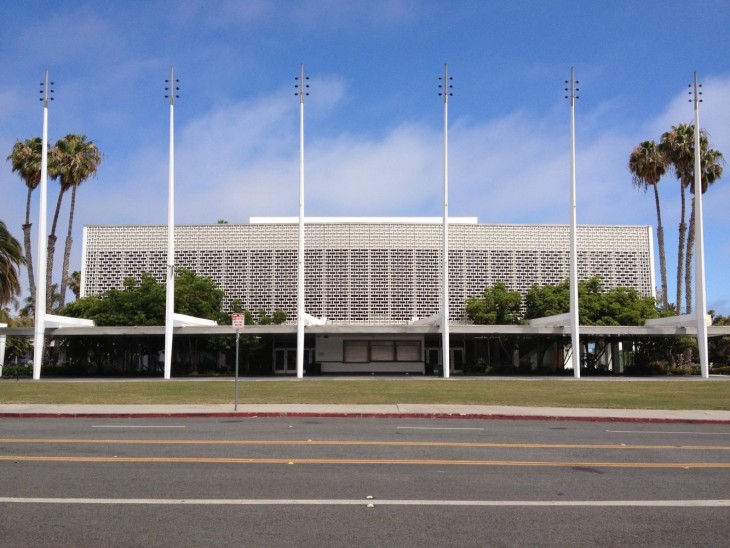Editor’s Note: This is an open letter to the Santa Monica City Council regarding the Downtown Specific Plan EIR Agenda Item No: 8-A hearing that is scheduled for discussion at tonight’s City Council meeting.
Dear Mayor O’Connor and Councilmembers:
The Santa Monica Chamber of Commerce opposes City Staff’s recommendation concerning the Downtown Specific Plan Environmental Impact Report (“DSP EIR”) because Staff’s approach would unduly narrow the range of options that will be studied in the EIR, even before there is a draft DSP available for public, Planning Commission and City Council review.
If approved, Staff’s approach to the DSP EIR will severely limit the City Council’s options in making decisions about DSP heights and densities. And moreover, Staff’s approach threatens the continued success of our Downtown as envisioned in the LUCE by significantly reducing Downtown’s allowable density (FARs) in comparison to the standards recommended by Downtown Santa Monica, Inc. (“DTSM”) and the standards currently in place.
Our concerns apply to both the development standards proposed to be studied for the vast majority of Downtown and the development standards proposed to be studied for the opportunity sites (i.e., the eight sites intended as key investment sites per LUCE Policy D1.5, p. 2.6-10). Like the EIR for any significant project, whether public or private, the DSP EIR should study a range of heights and densities to provide the information needed for City decision-makers and the public to make informed judgments about the DSP.
The Chamber recommends the following, alternative approach to the DSP EIR:
1. The DSP EIR should study the heights and densities recommended by DTSM in addition to those recommended by City Staff. The DSP EIR should also study the existing LUCE/Bayside District Specific Plan (“BDSP”) standards as a critical point of comparison. The latter standards are incorporated in the 2010 LUCE pending adoption of the DSP. (See LUCE at p. 2.1-48.)
2. For the opportunity sites with pending projects, the DSP EIR should study the heights and densities of these projects as proposed in accordance with the Staff Report’s Alternative 2 (without studying these projects to the level of specificity recommended by City Staff).
3. For the opportunity sites without pending projects, the DSP EIR should study Staff’s proposal for these opportunity sites, the Tier Three heights and densities recommended for these sites by DTSM, and the existing LUCE/BDSP standards.
To be clear, the Chamber is not recommending any specific proposal for development standards to be adopted in the DSP. Instead, the Chamber is recommending that the City study a broader range of development standards in the DSP EIR Staff proposes for study.
I. BACKGROUND: THE LUCE
The LUCE was unanimously adopted in July 2010 after nearly six years of public debate and participation. Though specific height and density limits for the Downtown District were deferred to a Downtown Specific Plan, the LUCE sets forth great detail about the City’s vision, goals and objectives for the Downtown District.
The LUCE envisions the Downtown as “a thriving, mixed-use urban environment for people to live, work, be entertained and be culturally enriched” (Policy LU6.2, p. 2-15), with the greatest intensity of development in the City. (Goal D7, p. 2.6-6) The LUCE states that “Downtown appropriately includes the City’s largest structures in height and mass” and that Downtown’s buildings are “generally the tallest in the city with the highest development intensity.” (pp. 1.3-5; 1.3-8; 2.6-6)
While the LUCE preserves 96% of the City at its existing scale (LUCE p. 1.3-7), Downtown is one of the few places where additional development is anticipated and encouraged by the LUCE to take advantage of the walkability and access to transit. (Policy D1.5, p. 2.6-10) The arrival of the light rail will infuse new energy into the Downtown and reduce automobile dependence. (LUCE p. 2.6-7) And, the clustering housing, employment, local-serving retail and services around the Expo Light Rail line is imperative to the LUCE’s goal of reducing vehicle trips by creating complete neighborhoods and supporting transit.” (Goal LU5, p. 2.1-14)
The LUCE describes the Downtown as an exciting and unique area characterized by a vibrant pedestrian-friendly atmosphere with retail, dining, entertainment, office, residential and tourist activities. (p. 2.6-5) The LUCE encourages new or expanded hotel and other visitor-serving uses in the Downtown (Goal D1.4, p. 2.6-10) and a broad mix of uses that creates dynamic activity in both the daytime and evening hours including high-density residential. (Goal D7.1, 2.6-12)
In the past 25 years, Santa Monica has done a terrific job of revitalizing the Third Street Promenade and the Downtown. However, other cities are constantly trying to compete by pulling business away from Santa Monica. The DSP’s development standards need to allow the Downtown to “maintain Downtown’s competitive advantage as a premier local and regional shopping, dining and entertainment destination, and support its evolution in order to respond to changing market conditions.” (LUCE Goal D1, p. 2.6-10)
The purpose of the DSP is to implement the LUCE. (Goal D14; Policies D14.1-14.2, p. 2.6-17) Unfortunately, the LUCE’s vision and policies for Downtown were inadequately considered by Staff in developing their recommended maximum development standards to be studied in the DSP EIR.
II. THE DSP EIR AND TIER THREE DEVELOPMENT STANDARDS
Staff’s recommended maximum Tier Three heights and densities would, if adopted, constitute a significant downzoning of Downtown — contrary to the LUCE’s vision as described in Section I above. Overall, Staff’s proposed maximum standards are a prescription for stagnation, not progress as the LUCE envisions.
Consider:
— In most areas of Downtown Staff’s proposed maximums represent a substantial “downzoning” in density comparison to the 1984 LUCE/Bayside District Specific Plan standards currently in place, and they are substantially more restrictive than the standards recommended by DTSM.
— The 1318 Second Street project recently approved by the City Council (6-1 on second reading) has a FAR of 3.1; yet City Staff’s recommended maximum density for this site is only 2.5.
— Although the LUCE expressly calls for the existing 50% residential floor area discount to be studied (see p. 2.1-48), City Staff’s proposal refuses even to study this important housing incentive, which has worked as intended in recent years to help incentivize more housing in the Downtown. Implicitly, City Staff would compel its elimination by excluding it from the scope of the DSP EIR.
To be clear, the Chamber has no objection to the DSP EIR studying City Staff’s recommended heights and densities, but DTSM’s recommendations deserve to be studied as well. The purpose of CEQA is to inform decision-making, not to foreclose it.
We submit it would be extraordinary for the City Council to turn its back on DTSM’s recommendations and refuse to study them, given DTSM’s historic role as the City’s primary community leader in addressing Downtown land use issues. Indeed, DTSM is the agency most responsible for Downtown’s amazing revitalization in the past 25 years. DTSM’s recommendations are certainly deserving of study in the DSP EIR.
The DSP EIR should also study the existing 1984 LUCE/BDSP standards, which are currently in effect as incorporated by the 2010 LUCE pending adoption of the DSP. (See p. 2.1-48) The City Council has approved five recent (post-LUCE adoption) projects using these standards: the 710 Wilshire mixed-use hotel project and four mixed-use housing/retail projects (two at Seventh/Arizona, 401 Broadway, and 1318 Second Street). If nothing else, studying these standards will provide an important point of comparison for the other alternatives studied.
Staff’s proposal would limit the DSP EIR to an approach that would compel the downzoning of properties in close proximity to the light rail station at Fourth Street/Colorado. Staff’s recommended maximum FARs to be studied for sites near the transit station are much more restrictive than the LUCE’s interim FAR standards with the 50% residential FAR discount. Staff’s proposal to downzone the density on these properties is contrary to the LUCE’s policies favoring Transit-Oriented Development near transit hubs. (See Goal LU5, p. 2.1-14 “Expo Light Rail line – Cluster housing, employment, local-serving retail and services around the Expo Light Rail line to reduce vehicle trips, create complete neighborhoods and support transit.”) At a minimum, the DSP EIR should study the existing standards to provide the Council and public with information for comparison purposes.
As a policy matter, at this stage of the DSP process, the DSP EIR should study a wide range of heights/densities including DTSM’s proposed development standards and the existing interim LUCE standards.
III. THE DSP EIR AND THE OPPORTUNITY SITES
City Staff’s approach to the opportunity sites should also be rejected by the City Council. Staff’s approach proposes no additional density for these sites compared with the proposed Tier Three standards for their underlying districts. This approach effectively eliminates the opportunity site concept itself, contrary to LUCE Policy D1.5 (p. 2.6-10). The ability to achieve additional community benefits on these key investment sites may require additional density depending upon the DSP’s Tier Three density standards. Notably, all three pending opportunity site hotel projects have FARs that exceed those recommended by City Staff as the maximums to be studied in the DSP EIR.
A. Opportunity Sites with Pending Projects.
For the opportunity sites with pending projects, no purpose would be served by studying purely hypothetical standards for these sites. The City Council, Planning Commission and general public would benefit from a study of these proposed projects’ size and scale as envisioned in City Staff’s Alternative 2. (See Staff Report at p. 24)
The DSP EIR is intended as an information document. It should provide City decision-makers with the information that will enable them to make informed judgments. City decision-makers and the general public would benefit from knowing how these proposed projects would impact the environment in the context of the Downtown as a whole (the subject of the DSP EIR).
Determining the DSP EIR’s scope is not the proper context to debate the merits of these projects. The City Council should refrain from allowing the DSP EIR to become a “political football.” Rather, the purpose of the DSP EIR is to ensure that the City and the public will have the broadest range of information to facilitate informed discussion and judgments about the DSP. This purpose is best served by studying the pipeline projects’ heights and densities as proposed in addition to the Tier Three standards for these sites as recommended by DTSM and Staff and the LUCE’s interim standards.
Contrary to City Staff’s Alternative 2, there is no need to study these projects at the project level of detail. (See Staff Report at p. 24) Each of these projects will have a project-specific EIR. There is no need to duplicate the project-specific level of detail in the DSP EIR.
With respect to City Staff’s proposed 135 foot height limit for the three pending projects, the Chamber sees no purpose served in studying such an alternative. None of the pending projects approximates 135 feet in height. The individual EIRs for the proposed projects on these sites will include alternatives to the proposed projects. There is no need to study reduced height and density alternatives for these sites in the DSP EIR.
City Staff’s offers two reasons for its proposed maximum height: (1) a mistaken opinion about community views concerning Downtown heights (uninformed by the City’s planned but not yet completed public opinion survey), and (2) Staff’s opinion that maximum height should be established in comparison to the podium height of the Clock Tower Building (without the clock tower itself). These are unpersuasive grounds for refusing to study heights comparable to the three pipeline projects as actually proposed, including one such project (the Miramar) that has cleared the float-up process with City Council direction (by a 6-1 vote) that contradicts Staff’s recommended maximum heights. As a Chamber, we are deeply troubled by the precedent that the City Council could provide one of our members explicit direction to move in one direction while the Staff proposes regulations contradicting this direction.
B. Opportunity Sites without Pending Projects.
For the opportunity sites without pending projects, the DSP EIR should study Staff’s proposal, the Tier Three heights and densities recommended for these sites by DTSM, and the existing LUCE/BDSP standards. Studying this combination should provide the City Council, Planning Commission and general public with the range of information needed to make informed judgments about these sites, pending receipt of specific project proposals.
These opportunity sites are located in very close proximity to the Light Rail station. Development of higher density housing, employment, retail and services around the Light Rail station is essential to create a complete neighborhood and support transit consistent with the LUCE’s trip reduction strategy. On several of these sites, the existing LUCE/BDSP standards and/or DTSM standards allow more density than Staff’s proposal. To provide the Council and public with a broad range of alternatives, it is important to study the existing LUCE/BDSP standards and DTSM’s proposed Tier Three heights and densities in addition to Staff’s proposal.
IV. THE CITY SHOULD STUDY THE ECONOMIC AND FISCAL IMPACTS OF THE PROPOSED DOWNTOWN SPECIFIC PLAN
The City’s work plan for the DSP should include an economic and fiscal impacts analysis similar to the analysis prepared for the LUCE.
A fundamental component of the LUCE is a diversified and sustainable economy. (LUCE Chapter 3.4) LUCE Goal E1 is to “create an economic base that satisfies the commercial service needs of the City’s residents while providing employment opportunities and a strong fiscal infrastructure for the City.” (p. 3.4-18) And, LUCE Policy E1.2 is to “judiciously manage the growth of existing and new uses that can generate and ensure financial support for a high level of public services. (p. 3.4-18)
The Downtown is the “commercial hub of the city.” (LUCE p. 1.3-7) The economic and fiscal impacts of the proposed development standards for the Downtown need to be provided to help decision-makers and the public understand how the proposed development standards will impact the City’s ability to maintain a diversified and sustainable economy. The Chamber is puzzled that the DSP EIR’s scope of work does not include studying these impacts. We urge the Council to direct Staff to include this important component in the DSP work plan.
V. CONCLUSION
Based upon the foregoing, the Chamber respectfully asks the City Council to reject City Staff’s recommended approach for the DSP EIR and instead to study a broader range of options as set forth in this letter.
Sincerely,
Brad Cox / Laurel Rosen
Chairman / President & CEO



